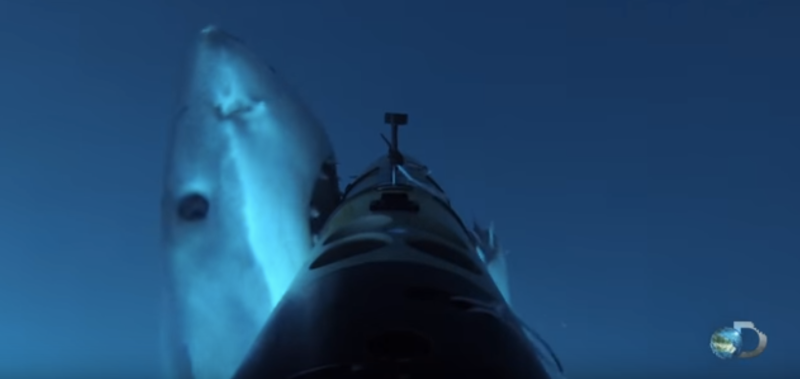In laymen’s terms they built a shark-chasing robot. You can guess what happened next…
The back story is a little more reputable. I recently attended the Center for Marine Robotics meeting at the Woods Hole Oceanographic Institution (WHOI) and learned about a very interesting robot. For the Discovery Channel’s Shark Week the network partnered with [Amy Kukulya] at WHOI to develop an autonomous underwater vehicle (AUV) that locates, follows, and films sharks in their natural habitats, swimming, patrolling, doing their thing.
The AUV platform is called REMUS and it was extensively modified for the job. The shark gets tagged with an acoustic beacon. An acoustic homing array on the front of the robot follows the beacon. Additional systems on board keep the robot straight, level, and perform navigation tasks. Numerous GoPros are mounted for filming. The REMUS AUV cruises with the sharks for many miles and long durations. During this time it sends back meta data, location, speed, orientation, and any faults.
One day while operating in Guadalupe Island a very strange fault occurred. The vehicle suddenly found itself in a strange attitude, unexpected velocity vector, then it had a water alarm. Communications stopped on its way to the surface but it came up anyway. When the crew pulled it from the water they noticed huge gouges in its paint. The GoPro footage revealed what had happened….
A shark attacked the robot.
These sharks in particular were feeding on seals. It seems that the shark was below the robot and confused its silhouette for a seal. The shark attacked by swimming up at the robot from deep water.

In the video you can actually hear the shark’s teeth crunching up against the aluminum hull of the AUV. And there is more shark vs. robot footage showing different angles of attack.
This wild and sensational encounter aside, real science has been gained from these robot-enabled missions. Sharks’ area of operation, patrolling patterns, methods of feeding, and how they interact with other sharks were only revealed to us recently by [Amy’s] shark-following robot. Future work may include following other large marine animals such as sea turtles or whales.
As the late [Prof. David Staelin] once told me, ‘make a new instrument and observe nature with it, you will always learn something new.
















Who would have thought this could happen if you create a (noisy) robot that follows an animal around and occasionally bumps in to it.
https://en.wikipedia.org/wiki/Electroreception
Do these people get any smarter, the aim should have been to invite an attack and measure the bite forces.
measure the bite forces, to what end? i mean, it’s not like that’s something we don’t already know.
To the obvious end of an electric vehicle trolling sharks.
lol
The second attack is kinda horrifying. DundunDUNDUNDUNNNNNNwham That creature is all flexing muscle and battle scars. Sharks are so cool.
They are lucky the shark didn’t have a laser!
Fricken’ laser beams!
I think calling a camera drone a robot is a bit of a stretch…..
seeing as the AUV was self piloting at the time it fits well withing what the word robot means.
Like I said on Youtube… maybe they could get a noisier motor or maybe some marbles in a steel can rattling around on the inside. I’d bite the damn thing too if I had a blender or a weed eater following me around the ocean…
I would not bite a weed eater, especially if it was noisy.
Check out 01:12 for a scene from Finding Nemo.
Not sure if it was the same ‘bot, but I saw a video of a shark-following robot about a year ago. Its movement was a bit sporadic, and it didn’t exactly maintain a constant following distance. Though it wasn’t shown, I figured it would eventually end badly for the robot, after the first time it tried to ram itself up the shark’s arse.
And here we have it.
Likely it is the same one. It is my understanding that the next generation will have a variable speed drive so it can track velocity.
mount -t lamniformes /dev/laser shark
Shark “Top” Predator? I thought “Killer” whales held that spot.